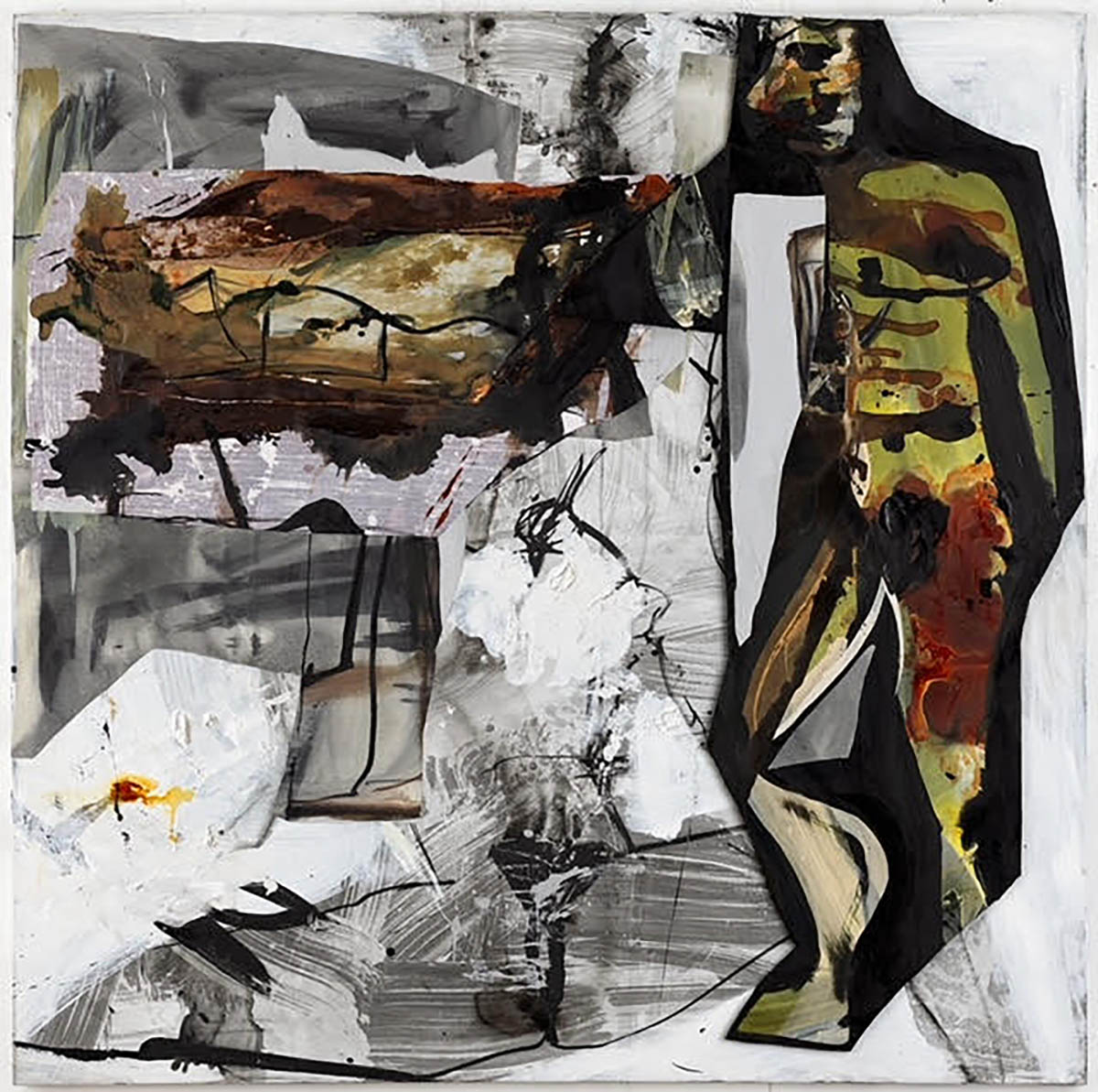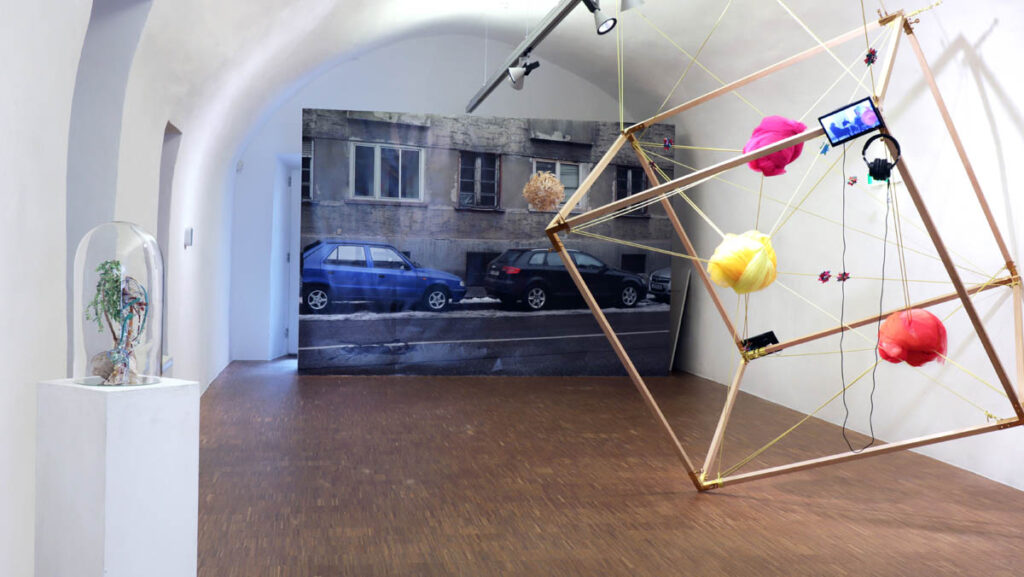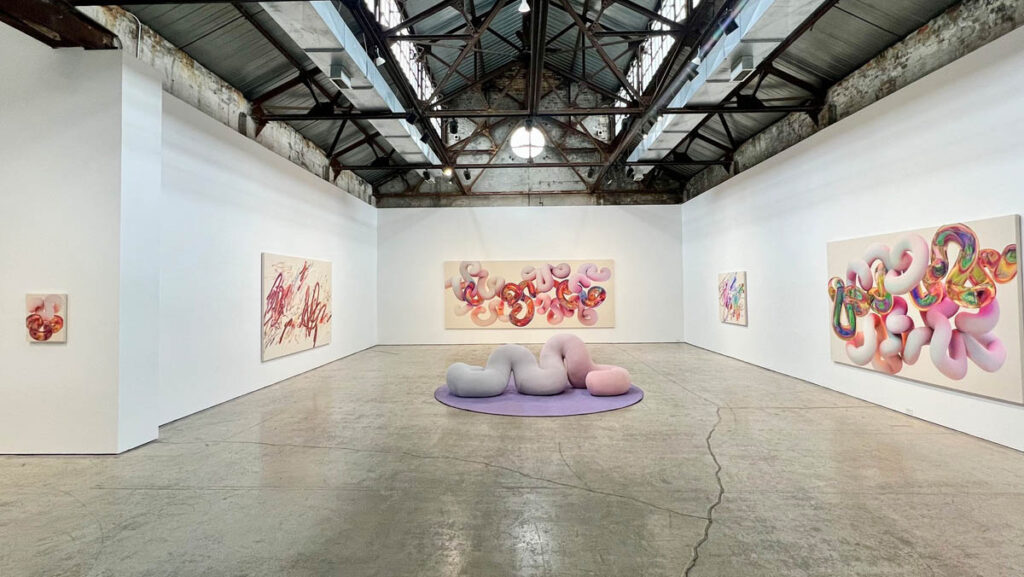
Tsibi Geva is back in his Tel Aviv studio and working on a new series of paintings amidst the ongoing Israel-Hamas war. A row of densely layered and collaged paintings hangs along the perimeter of the spacious yet overflowing studio. “That one isn’t finished yet, I still need to apply it… it’s just tacked on for now,” Tsibi Geva tells me as I look at a bright yellow dart-like cutout shape pinned to the canvas. Following his most recent back-to-back shows at Parterre Projects, Geva has shifted his focus towards grappling with the personal and national tragedy of the Nova music festival massacre on 7 October 2023.

How does it feel to be back in the studio?
Well since the war between Israel and Hamas started, I came back here recently and returned to painting, continuing some canvases I had been working on beforehand. When I begin a new period in my work, I usually lean upon and make use of earlier works, some of which either never became fully realized or were simply put aside. I often, quite literally, cut out sections or elements and transplant or glue them onto new paintings. This way my work reproduces itself and morphs into new forms.
The latest works are influenced by the horrific, heartbreaking events of October 7th. The unthinkable scenes take form in these multi-layered paintings that are a kind of archeological reconstruction of the chaos, drama, and deep pain. This series which I’ve called “After the Party” is an attempt to deal with the horrors that I see again and again on TV. It’s completely shocked me and I’m trying to figure out why. There was something about this event, in which a member of my family was also murdered, where young people, were so beautiful and at the height of their love of life. Of course, all of this changed in a few minutes. This overturning, this experience of the end, as I feel it „from a distance“, crushes the soul and doesn’t let go. It’s a space for me to paint, to work in the studio. I didn’t choose it and I didn’t aim for it – it just appears, sometimes figuratively and more directly, and sometimes as a kind of frantic and cruel energy, a feeling of shock and brokenness.

Perhaps the next question could be about the connection between this body of work and the previous one…
For a year and a half, I worked solely on the previous series of figurative rubber paintings, but I had difficulty mediating them to people. They struck a bare nerve. It was hard for me to „talk about it, that“. What happened is that this war broke out and it seemed to cover the works in a dark cloud of meaning. It became understandable during the exhibition at Parterre through the frightened and anxious looks of the people who visited. The paintings heralded something difficult that you had to deal with and gave them a new, additional meaning, something that almost touched the living flesh of death.

In the new works, those created during the war, I have returned to the canvas, returned to layers and early paintings that sat aside in the studio and never reached their full potential. They seemed to be waiting for the end. I had to use “painful” acts of collage and cuts to create new layers and sections, which both disrupted what was there before and added new layers. It ruined the works, the compositions, and the images. It is a kind of process of re-editing, updating, and post-traumatic layering of thoughts and images and painting stains from the past. A kind of connection is created, an integration of different times, mental and existential states, and disturbed and frenzied paintings above which there seems to be a cloud of anxiety, a darkening sky.

Your work moves back and forth, shifting between the past and present. Just a few days before the war your exhibition Terra Infirma at Fondazion Pino Pascali opened. How did that series come about and how do you see it now in light of the current situation?
The series on view in Terra Infirma is based upon a fundamental element of my practice: walking and collecting objects from the street every day. Since the beginning, I have utilized terrazzo tiles and structures or architectural elements that can be found in Israel and throughout the Mediterranean. That series, from the viewpoint of the current events, might offer a place of grounding and connection, of looking down or reflecting inward. I hope that my work acts or looks like a place that seems familiar or like a part of the urban and every day but also, like all that is happening now, off, also quite wrong.
Tsibi Geva’s exhibition Terra Infirma will be on view at Fondazione Pino Pascali until 31 March 2024.
Tsibi Geva – www.tsibigeva.com, www.instagram.com/tsibi_geva/




